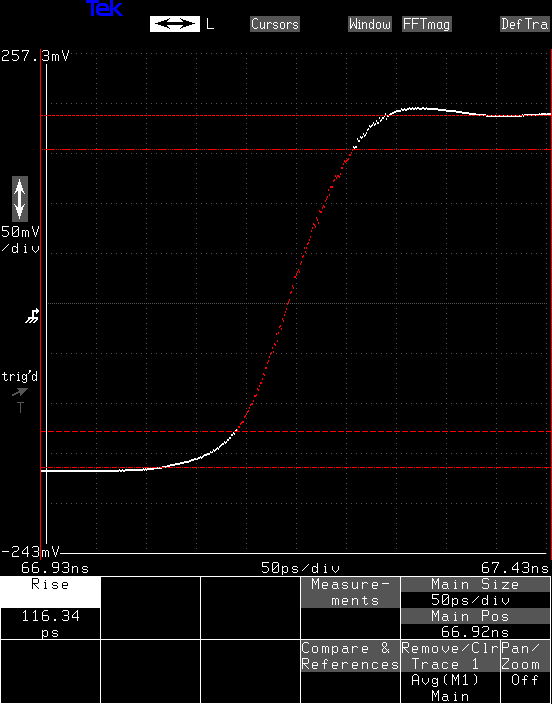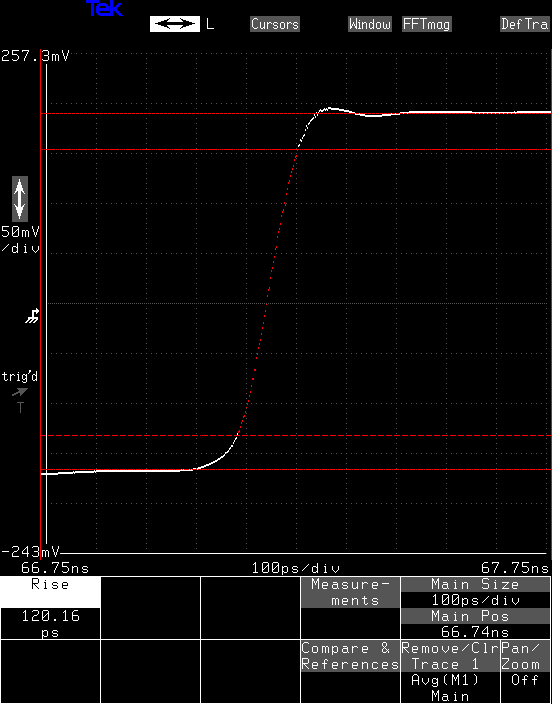I started this project with a pulse generator based on a ADCMP606 CML-output comparator. It was faster than my scope at the time, so all I could really say was that the rise-time was less than 350 ps or so. Last night, I found some quality time with the new scope, and measured the rise time of that circuit at less than 120 ps.

At a longer timescale, the step looks pretty good, with minimal overshoot. It's a handsome pulse, attesting to the robustness of the comparator in the face of my inept board design :-) This comparator has a datasheet rise time of 160 ps, which implies typical Analog Devices understatement/over-performance.

Overall, for a $6 (single-quantity) part, it's not bad at all. I think I'm going to make another revision of this board and release it. With a 120 ps rise-time, it's certainly good enough for testing oscilloscopes up to around 2 GHz.
 Ted Yapo
Ted Yapo
Discussions
Become a Hackaday.io Member
Create an account to leave a comment. Already have an account? Log In.
If you had steeper edges, would your new oscilloscope allow you to measure them? I mean, the whole setup, not just oscilloscope, but also probes, fixture (PCB) ...
Are you sure? yes | no
Yes! The SD-24 heads I'm currently using (20 GHz) have a 17.5 ps rise time. There are no 20 GHz probes as far as I know; it's all substitution measurements at 50 Ohms. So, if I'm careful, I can get into the tens of ps. I do have another pulse generator I built, not fully debugged yet, that achieved a 63 ps step. And, I've measured the internal TDR step generated by one of the scope channels itself at a 28 ps rise time (pic below).
Tektronix also made 40 GHz and 50 GHz plugins for this scope. I keep scanning ebay for bargains, but they're typically out of my price range. A cheap one will turn up eventually.
https://cdn.hackaday.io/files/470302012131520/2019-04-15T13:57:17.png
EDIT: I found 20 GHz probes. At the prices they fetch, they might as well not exist.
Are you sure? yes | no
Where are the limits currently, I mean, like, what's in Guinness' Book of Records for the shortest rise time?
Are you sure? yes | no
@salec I don't know what the record is.
Single-digit picosecond rise time steps are commercially available.
https://www.eetimes.com/document.asp?doc_id=1280043#
Are you sure? yes | no
Awesome :-)
Are you sure? yes | no